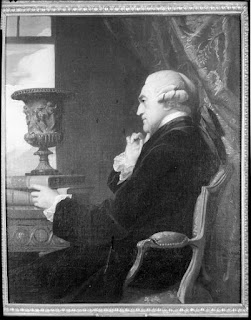Monday, June 03, 2013 -  conservation,Mauritshuis,provenance,Rachel Ruysch,Rembrandt,Vermeer
conservation,Mauritshuis,provenance,Rachel Ruysch,Rembrandt,Vermeer
 No comments
No comments
 conservation,Mauritshuis,provenance,Rachel Ruysch,Rembrandt,Vermeer
conservation,Mauritshuis,provenance,Rachel Ruysch,Rembrandt,Vermeer
 No comments
No comments
The "Other" Dutch Paintings from the Mauritshuis Traveling with Girl with a Pearl Earring from San Francisco to Atlanta to New York City
 |
| Rembrandt, Self-Portrait Germanisches National Museum |
Thirty-four 17th century Dutch paintings accompanied Girl with a Pearl Earring in the exhibition leaving the De Young Museum in San Francisco for the High Museum of Art in Atlanta (June 23 through September 29, 2013). Only 10 of those paintings will visit The Frick Collection in New York (October 22, 2013 through January 19, 2014).
Last year, a larger exhibit of 48 paintings from the Mauritshuis toured two museums in Japan: The Tokyo Metropolitan Museum of Art (TMMA) and the Kobe City Museum. The Mauritshuis exhibit at TMMA included a second Vermeer painting, Diana and her nymphs (now on display at the Gemeentemuseum Den Haag). After the North American tour, Palazzo Fava in Bologna, Italy, will host 40 paintings from the Mauritshuis while the 17th century palace undergoes an expansion and renovation until mid-2014. More than 100 paintings from the Royal Picture Gallery Mauritshuis have traveled to the Gemeentemuseum in The Hague.
 |
| Portrait of Rembrandt (1606-1669) with a Gorget, Rembrandt (studio copy) |
As its new name made clear, the museum did not merely exhibit paintings, for the entire ground floor was filled with a colorful display of "rarities." The art collection hung upstairs, where the walls were covered from floor to ceiling with paintings. Both collections had been formed over the years by various stadtholders; their turbulent history spans more than four centuries.
 |
| Rachel Ruysch Vase with Flowers 1700 Mauritshuis |
Half of the paintings at the De Young Mauritshuis show had been acquired by The Hague institution in the 20th century. Provenance information in the catalogue was provided in the section describing the painting and appeared incomplete. Many of the paintings have been restored in recent years. For example, infrared reflectography in the conservation studio in 1998 showed an underdrawing on a Rembrandt painting purchased in 1768, Portrait of Rembrandt (1606-1669) with a Gorget, that indicates it is a studio copy of a self-portrait of Rembrandt at the Germanisches National Museum in Nuremberg. The last painting highlighted in the catalogue is Vase of Flowers (1700) by Rachel Ruysch, a married woman and mother of 10 children who painted until her death at the age of 84. A recent restoration removed several old layers of varnish.
The ticket to the Mauritshuis paintings at the De Young included entrance to an adjoining exhibition of Rembrandt's (and contemporaries) etchings from the collection of the Fine Arts Museums of San Francisco.


















